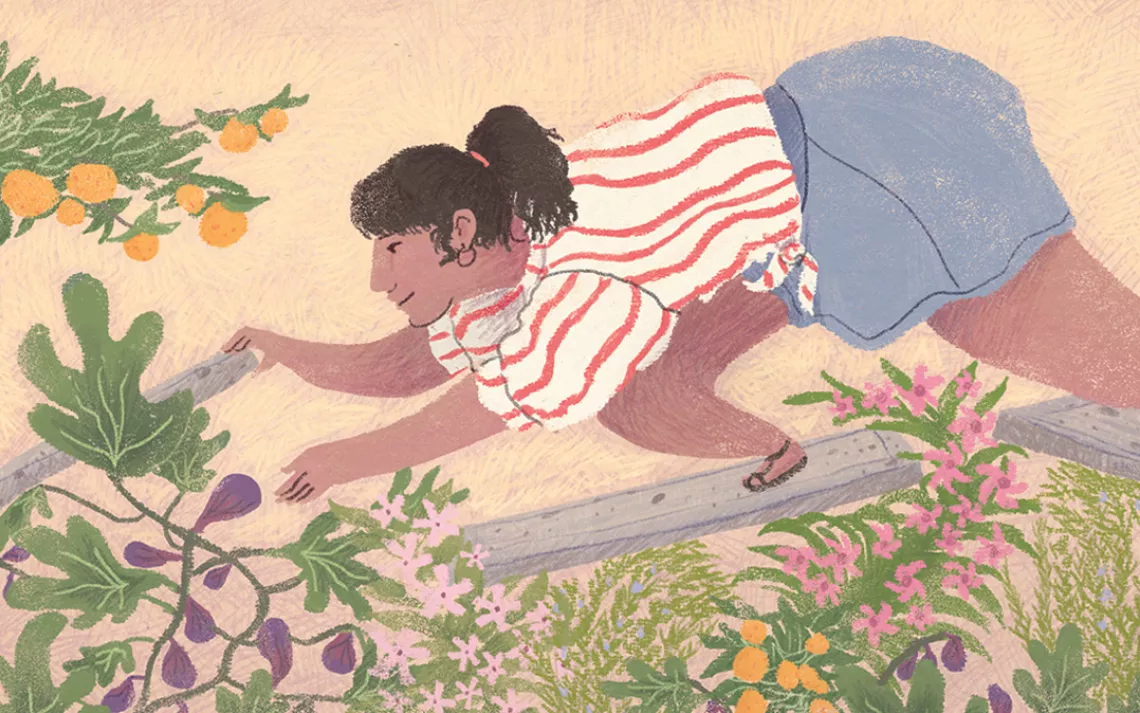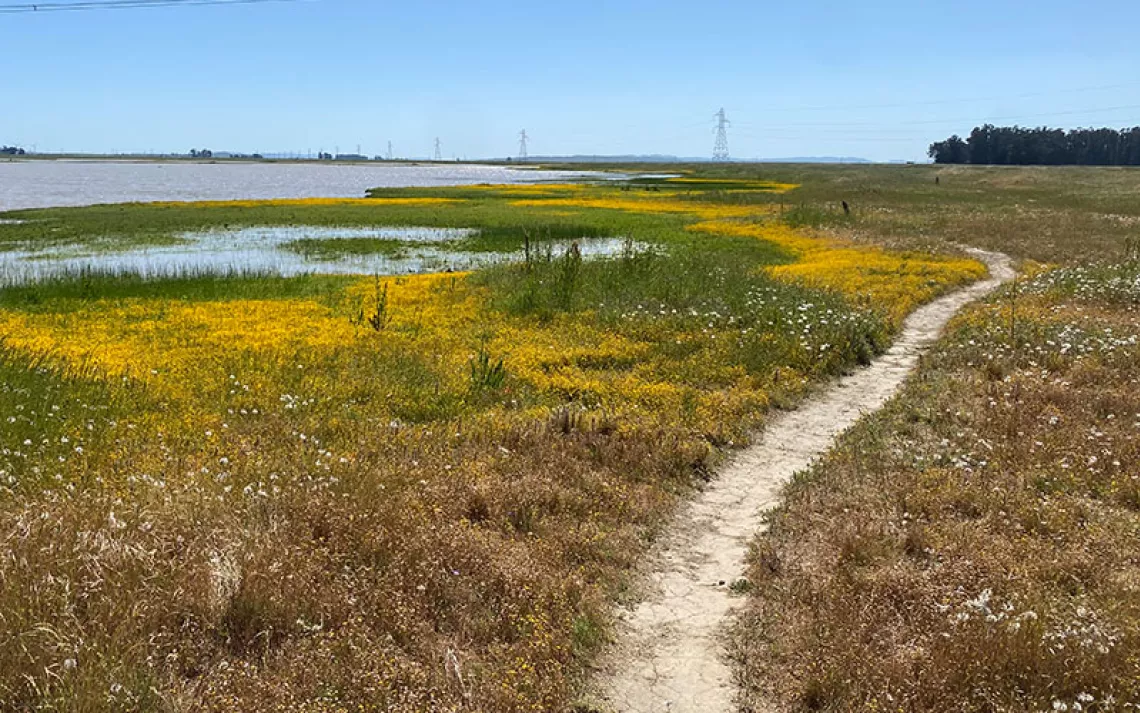A Charleston Newcomer Connects to Home Through Foraging
A young woman, feeling misplaced in a new city, finally forges connections through urban foraging

Illustration by Colleen Tighe
When I moved to Charleston, South Carolina, in the summer of 2011, I expected to fall in love with the bougainvillea-draped city. The streets were lined with fat palm trees, and the nearby beaches were pristine, the warm water a welcome sensation for a native New Englander. My boyfriend and I had relocated for his job, and I was excited to make a new home together and start freelancing.
I moved a lot in my twenties and had always made friends easily. But in Charleston, I felt misplaced and excluded. Brendan and I passed weekends ambling around the city, but we seemed too young to be spending all our time together. I missed hosting dinner parties and organizing group hikes on weekends.
One night, we stopped for dinner at our favorite pizza place. Feeling nostalgic, I ordered a salad dressed with a favorite of my dad's: figs. When the dish arrived, I was surprised to find that the homely fruit was bright pink on the inside, with a taste reminiscent of citrus-kissed strawberries. I hadn't understood what my father had liked about sticky-sweet figs for all those years—until that day in Charleston, when they were sitting, tangy and almost effervescent, before me. I boldly stuck my head through the kitchen window to ask the chef where he got the fruit. Despite my pleading, he wouldn't reveal his source.
I had no luck finding figs in the grocery store and kept missing them at the farmers' market. I started telling anyone who would listen—from the saleswoman in the stationery boutique to the students in the yoga studio where I started teaching—about the transcendental fig salad. It was through asking questions, about where to find more figs and how to prepare them, that I finally started having real conversations with people around town. My yoga students explained that fig trees were hiding in backyards and green spaces across the city, and they left brown paper bags of their bounty on my mat. Strangers started inviting me to check out their gardens.
At the time, I was still learning to identify Charleston's flora, most of which—like seductive Confederate jasmine and showy, poisonous oleander—was novel to me. But I soon found myself scanning gardens and parks for sprawling fig trees, excited whenever I spotted the fat, round, five-fingered leaves that often camouflaged their lusciously sweet fruit. I'd get up close to a tree to see whether birds had beaten me to it, or if its fruit was ripe for tasting. Increasingly, I adjusted my regular walking route to peruse the edges of the nearest park, always hoping to find fleshy, purplish figs hiding in the bushes. Anything I impromptu-foraged rarely made it all the way home.
When I was growing up, my family ventured to orchards and farms to pick apples and blueberries, but I'd never gathered forgotten, neglected fruits—accessible within an arm's reach from a city sidewalk or in a park, yet only available to those attuned to the natural world. Foraging as an adult had previously seemed highbrow, a pursuit for those like the chef at Copenhagen's Noma, who famously peppers his recipes with moss and bark. While I didn't see myself starting to cook with the earth's more imposing ingredients or scaling fences to pluck fruit, I relished the hunt and savored my late-budding connection to the city.
As I soon discovered, figs weren't the only edibles that could be foraged in Charleston. A map created by some of the city's best-known food writers led me to rosemary bushes lurking around the corner and to loquats and oranges hanging overhead. Even after fig season ended with fall's arrival, I found myself studying my surroundings more closely, asking myself if this was edible, if that was technically located in a public space, whether anyone would mind if I took a handful of these. I'd arrived surveying the horizon for flowers and palm trees but now found myself more often searching down and around for fallen, often obscured fruits—a sign that more surprises might be waiting nearby.
Pay attention, my new home was saying, and you'll be rewarded.
This article appeared in the March/April 2017 edition with the headline "Urban Foraging."
 The Magazine of The Sierra Club
The Magazine of The Sierra Club



